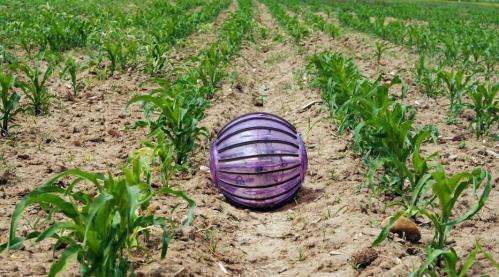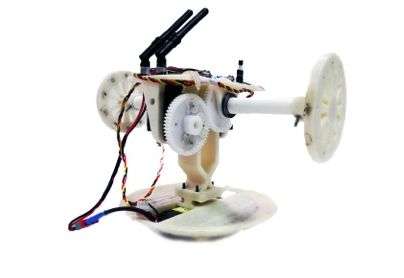ROSPHERE: A spherical robot for exploration missions

Researchers at the Universidad Politécnica de Madrid, Spain, have developed a robot prototype by using an unconventional motion mode to conduct missions on wild environments.
The Robotics and Cybernetics Research Group from the Universidad Politécnica de Madrid has special interest in developing robots able to live in environments where the motion can be a difficulty due to uneven ground. They studied, designed and built a land mobile vehicle that has an unconventional motion.
The result of this work is ROSPHERE, a robot without wheels or legs which has a single spherical form that, literally, scrolls by itself to conduct the missions and being inherently stable. The robot has proved its potential for diverse applications during the assessment.
How can a single ball be able to move apparently without any external force? In this case, the performance is based on a principle of relative simplicity involving the understanding of an essential physic concept: the center of mass.
The running of the "spherical robot" can be compared to the ball game thought for hamsters. In that case, as the hamster moves it changes the location of the center of mass of the system by destabilizing the spherical robot and consequently generating motion.
In general, the numerous motion systems of spherical robots can be understood as alternative ways to replace the little animal with a mechanical system which is complemented with electronics instruments and programs in a way that, as a joint, the "mechatronic" system may induce motion of a ball in a controlled manner.
ROSPHERE, the prototype developed by the Cybernetics Research Group of the UPM, for example, has a pendulum system with a capacity of two independent motions. Thanks to this internal mechanism, ROSPHERE can conduct straight movements and similar curvilinear motion to a car.

A significant part of time spent on this research was related to the "mechatronic" development of the robot, this includes all the aspects that involve its mechanics and control electronics, communications and programming by generating two versions which were proved on evolutions of the pendulum and its drive system.
However, the development of the group from the UPM went beyond the creation of the robot. After the development of the test platforms and validation of its control systems, the robot was tested on diverse scenarios to assess its real applications.
Researchers first used the robot to measure in situ the environmental variables on the rows of crops, where the robot shape is suitable for rolling and gathering information that can be used to monitoring the precision farming techniques.
The robot was also tested on shared spaces with people in order to verify that this robot can safely interact without being a threat to people. Researchers selected as a prototype scenario the Parque del Retiro of Madrid (Spain).
ROSPHERE has shown a great potential for different applications on its preliminary tests. Improving its autonomous navigation or its mechanical strength would increase its application fields.
More information: Hernandez, J. et al. Moisture measurement in crops using spherical robots, Industrial Robot: An International Journal, vol. 40, pp. 59–66, 2013.
Provided by Universidad Politécnica de Madrid



















